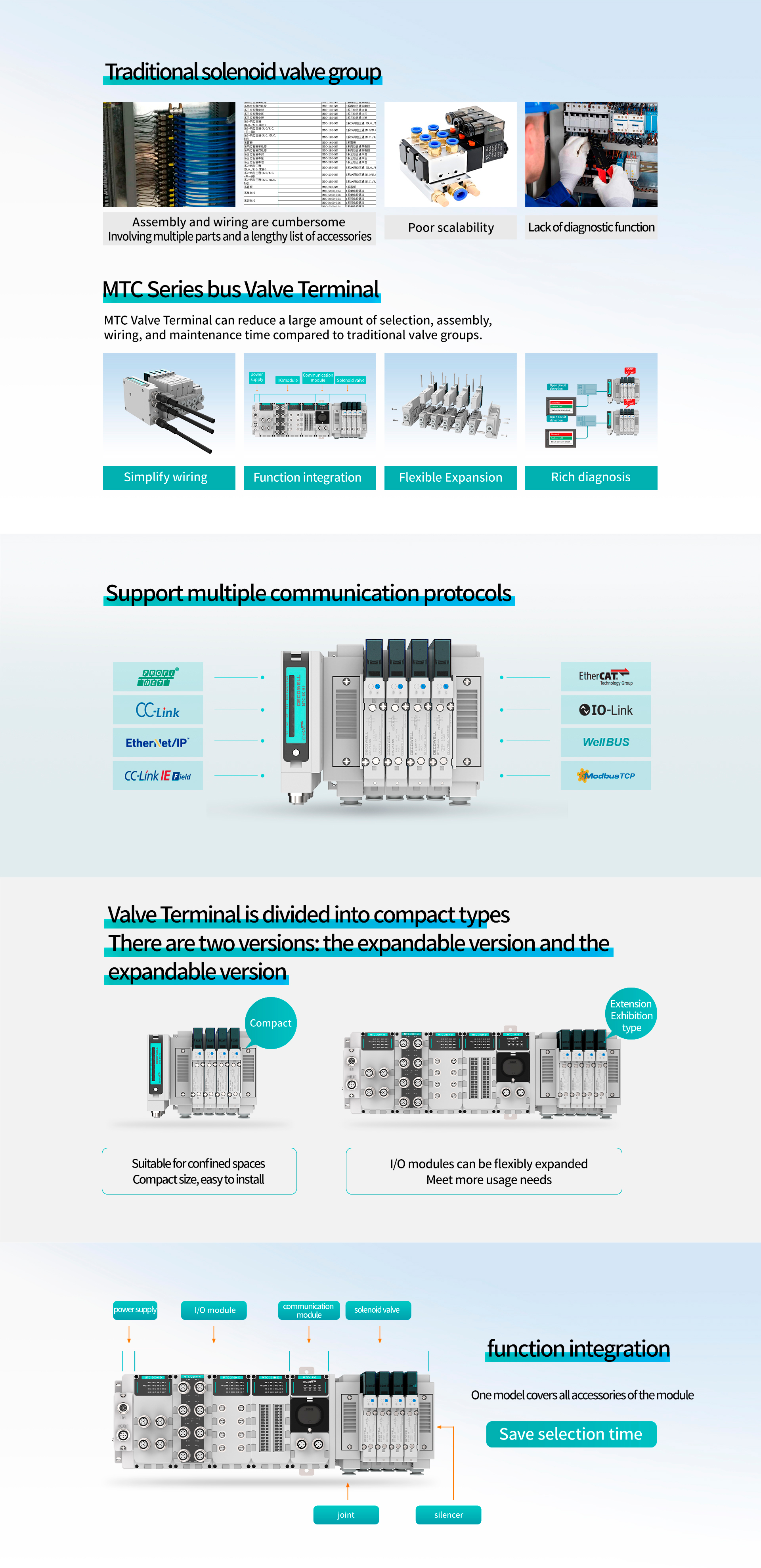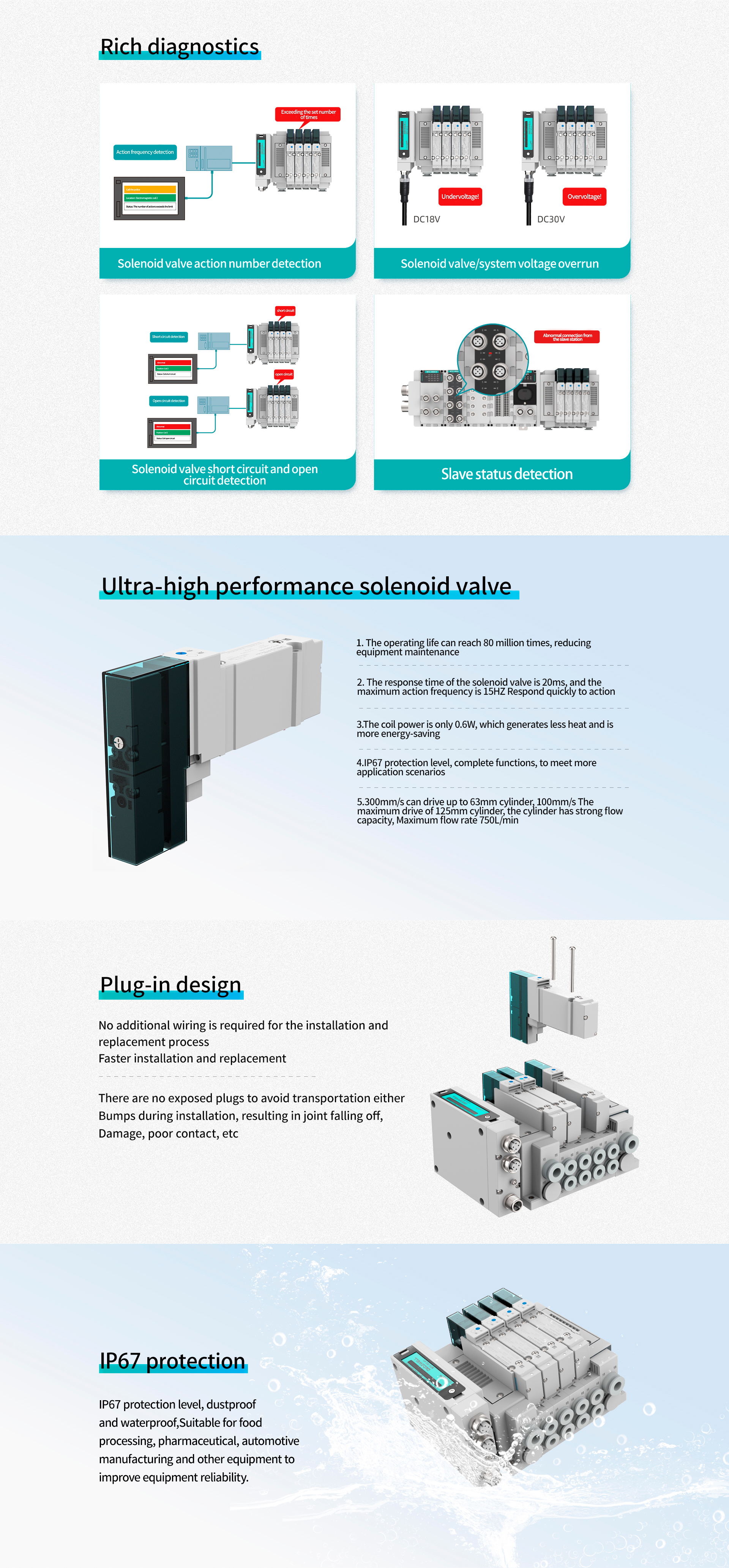Imagine a bustling factory floor, machines humming, and processes interlinked in an intricate dance. Yet, why do failures always occur during critical moments? It’s often a question of connectivity and control. The valve terminal plays a crucial role in industrial automation, acting as the nerve center for operating pneumatic and hydraulic systems. But what makes choosing the right valve terminal essential for seamless operations?

Flaws in Traditional Solutions
Traditional valve control methods—like using individual solenoids—have long been the norm, but they come with significant drawbacks. These older approaches often involve cumbersome wiring and limit the scalability of the systems. Picture a tangled web of connections that makes troubleshooting a nightmare. This complexity can lead to delays, increased operational costs, and higher chances of system failures.
New Technology Principles
Enter the modern valve terminal—designed for efficiency in the realm of automation. These cutting-edge systems utilize centralized control and optimized communication protocols, simplifying integration. Look, it’s simpler than you think! With advanced features like diagnostic capabilities and real-time data monitoring, the valve terminal becomes not just a control unit but an intelligent solution. Concepts such as Industry 4.0 are now more accessible through these technologies—seamlessly integrating with IoT devices and fostering better decision-making processes.
Quantified User Benefits
Adopting a valve terminal translates into tangible user benefits, including reduced installation time, enhanced reliability, and improved system performance. Users report an average of a 30% decrease in maintenance costs—yes, that’s a significant figure! Moreover, organizations experience boosts in productivity due to streamlined operations. Imagine the possibilities when your systems are not just functional, but also adaptable to new technologies and changes in the production landscape.
Conclusion: Evaluation Criteria for Solutions
When considering which valve terminal to implement, be sure to verify these three critical metrics: ① Compatibility with existing systems, ② Scalability for future expansion, and ③ Availability of technical support. Making informed decisions can dramatically affect your operational success.
Exploring the Industrial Valve Island
The concept of the industrial valve island has changed the game in process automation. By grouping multiple valves in a compact unit, it not only saves space but also optimizes functionality. The industrial valve island plays a critical role in enhancing system efficiency; however, traditional setups still impose limitations, forcing manufacturers to confront inefficiencies. Think of how many resources are wasted simply due to outdated configurations.
Diving into the Valve Island System
When talking about streamlined automation, the valve island system stands out for its ability to centralize control while maximizing output. This technology allows for quick modifications, essential when adapting to changing production needs. Moreover, companies harness its benefits for improved operational flexibility. Have you considered how easy it can be to manage multiple valve functions from one centralized point? The modern industry thrives on such integrations, leading to smoother workflows and reduced downtime.

Final Thoughts on Valve Solutions
As we explore the complex yet exciting realm of valve terminals, industrial valve islands, and valve island systems, it’s clear that choosing the right components can make a world of difference. In this rapidly advancing landscape, remember the key advantages each has to offer. For your supply needs, consider partnering with DECOWELL, a manufacturer known for its reliable products and commitment to innovation. Together, let’s rise to the challenges and capitalize on the future of automation.
